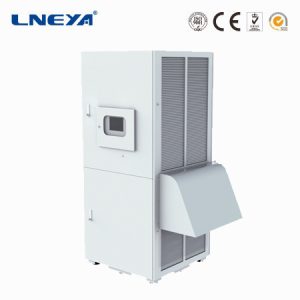Liquid Cooling
Overview
Liquid cooling is a heat dissipation technology that uses liquid to reduce the temperature of the device. It is widely used in electronic equipment, computer hardware, and some high-performance systems and industrial equipment. Liquid cooling systems absorb and dissipate the heat generated by the device by circulating liquid to keep the temperature of the device within an acceptable range. Generally, a liquid cooling system consists of a cooling medium, a radiator, a pump, and piping.
The cooling medium can be water, glycol solution or other special coolants. It contacts the device through the heat sink, absorbs the heat generated by the device, and transfers the heat to the heat sink. The radiator is the core component of the liquid cooling system, usually made of metal, with a large surface area and good thermal conductivity. The heat is transferred to the surrounding air or other cooling medium through the surface of the radiator, so that the heat can be dissipated quickly. The pump is responsible for pushing the cooling medium to circulate in the liquid cooling system, bringing heat from the device to the radiator, and maintaining the stability of the cycle.
Compared with the traditional air cooling system, the liquid cooling system has higher heat dissipation efficiency and cooling capacity. It can effectively reduce the temperature of the equipment and improve the stability and work efficiency of the equipment. Liquid cooling technology is widely used, especially in high-performance computers, servers, data centers, energy storage, and electric vehicles that require high heat dissipation.
In short, liquid cooling is a technology that uses liquid circulation to dissipate heat. Through the cooperation of cooling medium, radiator and pump, it can effectively reduce the temperature of the equipment and improve the performance and stability of the equipment.
Advantages
Fast heat dissipation: Because the ability of liquid to take away heat is 3000 times that of air with the same volume. Therefore, the liquid cooling technology can quickly dissipate heat, so that the temperature of the heat dissipation equipment can be quickly reduced, ensuring the safety and stability of the equipment.
Low noise: The heat dissipation system using air as the medium usually requires a relatively high-power fan and air conditioner to dissipate heat, and the noise generated by the fan operation is relatively large. The liquid cooling heat dissipation technology uses the pump to drive the cooling medium to circulate in the system and dissipate heat to solve the heat dissipation problem of all heating devices or key high-power devices. It has excellent noise reduction effect, improves the comfort of the operation and maintenance environment of the computer room, and solves the noise pollution problem.
Low energy consumption: Generally speaking, the liquid cooling system saves more than 30% of electricity than the air cooling system. The heat transfer path is short, and the cryogenic liquid is directly supplied to the communication equipment by the CDU (cooling distribution unit), which has high heat exchange efficiency and better heat exchange effect. The use of liquid cooling technology is also conducive to further reducing the chip temperature, bringing higher reliability and lower energy consumption. The energy consumption of the whole machine is expected to be reduced by about 5%.
High adaptability: Liquid cooling is less affected by environmental factors and can be deployed in any area, including high-altitude areas. Liquid cooling can provide stable heat dissipation and will not be affected by weather and other factors.
Utilization of waste heat: The heat generated by liquid cooling can be connected to the heating system and hot water supply system through heat exchange to meet people’s needs for heating and warm water supply.
Applications

Liquid Cooling Systems and Solutions
Liquid Cooling Systems for Data Center
It is suitable for semiconductor testing, constant temperature testing of electronic equipment, cooling server supporting infrastructure, and other fluid temperature control places. It is a modular intelligent device with independent heat exchange system, power supply system and monitoring system.
Liquid Cooling Systems for Energy Storage
If the temperature of the battery exceeds a certain limit, it will shorten the life of the battery and even cause a fire hazard. This is where liquid cooling comes in. By using a liquid cooling system to manage the heat generated by the batteries, battery storage containers can operate more efficiently and safely.
Chillers are designed for flexibility with a wide variety of available compressors, pumps, controllers, monitors, evaporators, and various safety features. Cool as low as -120°C, support custom design. It can be used for temperature control in various industries.
Dear Sir/Madam, please fill out the form below and one of our team members will be in touch shortly!
Email: lilia@lneya.com WeChat ID: +8615251628237 WhatsApp: +86 17851209193

 LNEYA
LNEYA
 简体中文
简体中文














































































